In this work, we study a multiscale inverse problem associated with a multi-type model for age structured cell populations. In the single type case, the model is a McKendrick-VonFoerster like equation with a mitosis-dependent death rate and potential migration at birth. In the multi-type case, the migration term results in an unidirectional motion from one type to the next, so that the boundary condition at age 0 contains an additional extrinsic contribution from the previous type. We consider the inverse problem of retrieving microscopic information (the division rates and migration proportions) from the knowledge of macroscopic information (total number of cells per layer), given the initial condition. We first show the well-posedness of the inverse problem in the single type case using a Fredholm integral equation derived from the characteristic curves, and we use a constructive approach to obtain the lattice division rate, considering either a synchronized or non-synchronized initial condition. We take advantage of the unidirectional motion to decompose the whole model into nested submodels corresponding to self-renewal equations with an additional extrinstic contribution. We again derive a Fredholm integral equation for each submodel and deduce the well-posedness of the multi-type inverse problem. In each situation, we illustrate numerically our theoretical results.
1.
Introduction
It is a familiar fact that integral inequalities have many applications in different mathematical segments as in the theory of differential and integral equation control theory, statistic, among others. Over the past two decades, integral inequalities have attracted good numbers of research to devote themselves because of the importance in different fields. Therefore, several generalizations of classical integral inequalities were obtained in the real, interval and fuzzy spaces. In all of those, HH-inequalities establish strong relationship between different classes of convex functions and have an important place in many areas of mathematics. This double inequality, introduced by Hermite [1] and Hadamard [2], express that if convex function T:I→R on an interval I=[u,ν] satisfies the following inequality:
for all u,ν∈I. If T is concave, then double inequality (Eq 1) is reversed. A one step forward, Sarikaya et al. provided the fractional version of inequality (Eq 1) in [3]. Moreover, midpoint and trapezoidal inequalities [4,5], which are commonly used in special means and measures errors, are the most well-known results associated with these inequalities. But, the most familiar version of inequality (Eq 1) is known as Hermite-Hadamard-Fejér inequality, was presented by Fejér [6] as follows:
Let T:I→R be a convex function on an interval I=[u,ν] with u≤ν, and let Ω:I=[u,ν]⊂R→R,with Ω≥0, be a integrable and symmetric function with respect to u+ν2. Then, we have the following inequality:
If T is concave, then double inequality (Eq 2) is reversed. If Ω(ω)=1, then we obtain Eq (1) from Eq (2). Many inequalities can be obtained for convex functions using inequality (Eq 2) and the special symmetric function Ω(ω). Similarly, many Scholars used fractional integrals to construct new versions of inequality (Eq 2), obtaining new bounds the left- and right-hand of sides of inequality (Eq 2), see [7,8,9]. What are more, some inequalities for the product of two coordinated convex functions was firstly discussed by Latif and Alomari in [10]. Besides, the most general versions of inequalities were given by Ozdemir et al. [11,12] through product of two coordinated s-convex functions and product of two coordinated h-convex functions. Through fractional integral, Budak and Sarikaya [13] established the strong relationship between new HH-type inequality and the product of two coordinated convex functions.
On the other hand, interval analysis is a well-known method for dealing interval uncertainty; it is an important material that is used in mathematical and computer models. Ramon E. Moore [14], dubbed the "father of Interval analysis" published the first book on the subject in 1966. Thereafter, many authors in the mathematical community have paid close attention to this area of research. In light of this, Sadowska [15] arrived at the following conclusion for an IVF:
Let T:[u,ν]⊂R→R+I be a convex interval-valued function (convex-IVF) given by T(ω)=[T∗(ω),T∗(ω)] for all ω∈[u,ν], where T∗(ω) and T∗(ω) are convex and concave functions, respectively. If T is interval Riemann integrable (in sort, IR-integrable), then
Note that, the inclusion relation Eq (3) is reversed when T is concave-IVF. Following that, many scholars used inclusion relations and various integral operators to establish a close relationship between inequality and IVFs. Recently, Costa [16] obtained Jensen's type inequality for fuzzy-IVF. Costa and Roman-Flores [17,18] introduced different types of inequalities for fuzzy-IVF and IVF, and discussed their properties. Roman-Flores et al. [19] derived Gronwall for IVFs. Moreover, Chalco-Cano et al. [20,21] presented Ostrowski-type inequalities for IVFs by using the generalized Hukuhara derivative and provided applications in numerical integration in IVF. Nikodem et al. [22], and Matkowski and Nikodem [23] presented the new versions of Jensen inequality for strongly convex and convex functions. Zhao et al. [24,25] derived Chebyshev, Jensen's and HH-type inequalities for IVFs. Recently, Zhang et al. [26] generalized the Jensen inequalities and defined new version of Jensen's inequalities [16] for set-valued and fuzzy-set-valued functions through pseudo order relation. After that, for convex-IVF, Budek [27] established interval-valued fractional Riemann-Liouville HH-inequality by means of inclusion relation. For more useful details, see [28,29,30,31,32,33,34] and the references therein.
Recently, Khan et al. [35] introduced the new class of convex fuzzy mappings is known as (h1,h2)-convex FIVFs by means of FOR and presented the following new version of HH-type inequality for (h1,h2)-convex FIVF involving fuzzy-interval Riemann integrals:
Theorem 1.1. Let ˜T:[u,ν]→F0 be a (h1,h2)-convex FIVF with h1,h2:[0,1]→R+ and h1(12)h2(12)≠0. Then, from θ-levels, we get the collection of IVFs Tθ:[u,ν]⊂R→R+I are given by Tθ(ω)=[T∗(ω,θ),T∗(ω,θ)] for all ω∈[u,ν] and for all θ∈[0,1]. If ˜T is fuzzy-interval Riemann integrable (in sort, FR-integrable), then
If h1(τ)=τ and h2(τ)≡1, then from Theorem 1.1, we get following the result for convex FIVF:
A one step forward, Khan et al. introduced new classes of convex and generalized convex FIVF, and derived new fractional HH-type and HH-type inequalities for convex FIVF [36], h-convex FIVF [37], (h1,h2)-preinvex FIVF [38], log-s-convex FIVFs in the second sense [39], LR-log-h-convex IVFs [40], harmonically convex FIVFs [41] and the references therein. We refer to the readers for further analysis of literature on the applications and properties of fuzzy-interval, and inequalities and generalized convex fuzzy mappings, see [42,43,44,45,46,47,48,49,50,51] and the references therein.
2.
Preliminaries
Let R be the set of real numbers and RI be the space of all closed and bounded intervals of R, and ϖ∈RI be defined by
If ϖ∗=ϖ∗, then ϖ is said to be degenerate. If ϖ∗≥0, then [ϖ∗,ϖ∗] is called positive interval. The set of all positive interval is denoted by R+I and defined as R+I={[ϖ∗,ϖ∗]:[ϖ∗,ϖ∗]∈RIandϖ∗≥0}.
Let ϱ∈R and ϱϖ be defined by
Then the Minkowski difference ξ−ϖ, addition ϖ+ξ and ϖ×ξ for ϖ,ξ∈RI are defined by
and
The inclusion "⊆" means that
Remark 2.1. [41] The relation "≤I" defined on RI by
for all [ξ∗,ξ∗],[ϖ∗,ϖ∗]∈RI, it is an order relation. For given [ξ∗,ξ∗],[ϖ∗,ϖ∗]∈RI, we say that [ξ∗,ξ∗]≤I[ϖ∗,ϖ∗] if and only if ξ∗≤ϖ∗,ξ∗≤ϖ∗.
For [ξ∗,ξ∗],[ϖ∗,ϖ∗]∈RI, the Hausdorff–Pompeiu distance between intervals [ξ∗,ξ∗] and [ϖ∗,ϖ∗] is defined by
It is familiar fact that (RI,d) is a complete metric space.
A fuzzy subset T of R is characterize by a mapping ξ:R→[0,1] called the membership function, for each fuzzy set and θ∈(0,1], then θ-level sets of ξ is denoted and defined as follows ξθ={u∈R|ξ(u)≥θ}. If θ=0, then supp(ξ)={ω∈R|ξ(ω)>0} is called support of ξ. By [ξ]0 we define the closure of supp(ξ).
Let F(R) be the collection of all fuzzy sets and ξ∈F(R) be a fuzzy set. Then, we define the following:
1)ξ is said to be normal if there exists ω∈R and ξ(ω)=1;
2)ξ is said to be upper semi continuous on R if for given ω∈R, there exist ϵ>0 there exist δ>0 such that ξ(ω)−ξ(y)<ϵ for all y∈R with |ω−y|<δ;
3)ξ is said to be fuzzy convex if ξθ is convex for every θ∈[0,1];
4)ξ is compactly supported if supp(ξ) is compact.
A fuzzy set is called a fuzzy number or fuzzy interval if it has properties 1)–4). We denote by F0 the family of all fuzzy intervals.
Let ξ∈F0 be a fuzzy-interval, if and only if, θ-levels [ξ]θ is a nonempty compact convex set ofR. From these definitions, we have
where
Proposition 2.2. [17] If ξ,ϖ∈F0, then relation "≼" defined on F0 by
this relation is known as partial order relation.
For ξ,ϖ∈F0 and ϱ∈R, the sum ξ˜+ϖ, product ξ˜×ϖ, scalar product ϱ.ξ and sum with scalar are defined by:
Then, for all θ∈[0,1], we have
For ψ∈F0 such that ξ=ϖ˜+ψ, then by this result we have existence of Hukuhara difference of ξ and ϖ, and we say that ψ is the H-difference of ξ and ϖ, and denoted by ξ˜−ϖ. If H-difference exists, then
Definition 2.3. [32] The IVF T:∆=[a,b]×[u,ν]→R+ is said to be coordinated convex function on∆ if
for all (a,b),(u,ν)∈∆,τ and ,τ,s∈[0,1]. If inequality (Eq 17) is reversed, then T is called coordinated concave IVF on ∆.
Definition 2.4. [44] The FIVF ˜T:[u,ν]→F0 is said to be convex FIVF on[u,ν] if
for all x,ω∈[u,ν],τ∈[0,1], where T(x)≽˜0. If ˜T is concave FIVF on [u,ν], then inequality (Eq 18) is reversed.
Definition 2.5. [35] Let h1,h2:[0,1]⊆[u,ν]→R+ such that h1,h2≢0. Then, FIVF ˜T:[u,ν]→F0 is said to be (h1,h2)-convex FIVF on [u,ν] if
for all x,ω∈[u,ν],τ∈[0,1], where ˜T(x)≽˜0. If ˜T is (h1,h2)-concave on [u,ν], then inequality (Eq 19) is reversed.
Remark 2.6. [35] If h2(τ)≡1, then (h1,h2)-convex FIVF becomes h1-convex FIVF, that is
If h1(τ)=τ,h2(τ)≡1, then (h1,h2)-convex FIVF becomes convex FIVF, that is
If h1(τ)=h2(τ)≡1, then (h1,h2)-convex FIVF becomes P-convex FIVF, that is
Theorem 2.7. [35] Let ˜T,˜J:[u,ν]→F0 be two (h1,h2)-convex FIVFs with h1,h2:[0,1]→R+ and h1(12)h2(12)≠0. Then, from θ-levels, we get the collection of IVFs Tθ,Jθ:[u,ν]⊂R→R+I are given by Tθ(x)=[T∗(x,θ),T∗(x,θ)] and Jθ(x)=[J∗(x,θ),J∗(x,θ)] for all x∈[u,ν] and for all θ∈[0,1]. If˜T˜×˜J is fuzzy Riemann integrable, then
and,
where
Remark 2.8. If h1(τ)=τ and h2(τ)≡1, then Eq (23) reduces to the result for convex FIVF:
And if h1(τ)=τ and h2(τ)≡1, then Eq (24) reduces to the result for convex FIVF:
Theorem 2.9. Let ˜T:[u,ν]→F0 be a convex FIVF with u<ν. Then, from θ-levels, we get the collection of IVFs Tθ:[u,ν]⊂R→R+I are given by Tθ(x)=[T∗(x,θ),T∗(x,θ)] for all x∈[u,ν] and for all θ∈[0,1]. If ˜T∈TR([u,ν],θ) and Ω:[u,ν]→R,Ω(x)≥0, symmetric with respect to u+ν2, and ∫νuΩ(x)dx>0, then
If T is concave FIVF, then inequality (Eq 27) is reversed.
2.1. Fuzzy-interval double integral and convexity
Firstly, we shall define fuzzy-interval double integrable.
A FIVF ˜T:[a,b]→F0 is said to be continuous at x0 if for each ϵ there exist a δ such that
Whenever |x−x0|<δ. A tagged partition of [a,b] is any finite ordered subset P1 having the form
Let P(δ,[a,b]) be the set of all P1∈P(δ,[a,b]) such that ∆(xi)<δ. Then, P1 is called δ-fine. For each set of numbers [xi−1,xi], where 1≤i≤k, choose an arbitrary point ηi and taking the sum
where ˜T:[a,b]→F0. We call S(˜T,P1,δ[a,b]) an integral sum of ˜T corresponding to P1∈P(δ,[a,b]). Let C([a,b],F0) be the collection of continuous FIVFs.
If P1≜[xi−1,xi] such that P1∈P(δ,[a,b]), where 1≤i≤k, and P2≜[ωj−1,ωj] such that P2∈P(δ,[u,ν]), where 1≤j≤n, then rectangles ∆i,j=[xi−1,xi]×[ωj−1,ωj] partition the rectangle ∆=[a,b]×[u,ν] and the points (ηi,wj)∈[xi−1,xi]×[ωj−1,ωj]. Let P(δ,∆) be the collection of all δ-fine partition P=P1×P2 of ∆.
Similarly to Eq (28), we have
an integral sum of ˜T:∆=[a,b]×[u,ν]→F0, where ∆Ai,j be the of rectangle.
Definition 2.1.1. A function T:[a,b]→R is called Riemann integrable (R-integrable) on [a,b] if there exists B∈R such that, for each ϵ, there exists δ>0 such that
for every Riemann sum of T corresponding to P1∈P(δ,[a,b]) and for arbitrary choice of ηi∈[xi−1,xi] for 1≤i≤k. Then, we say that B is the R-integral of T on [a,b] and is denote by B=(R)∫baT(x)dx.
Definition 2.1.2. [25] A function T:[a,b]→RI is called interval Riemann integrable (IR-integrable) on [a,b] if there exists B∈RI such that, for each ϵ, there exists δ>0 such that
for every Riemann sum of T corresponding to P1∈P(δ,[a,b]) and for arbitrary choice of ηi∈[xi−1,xi] for 1≤i≤k. Then, we say that B is the IR-integral of T on [a,b] and is denote by B=(IR)∫baT(x)dx.
Definition 2.1.3. A function ˜T:[a,b]→F0 is called fuzzy-interval Riemann integrable (FR-integrable) on [a,b] if there exists ˜B∈F0 such that, for each ϵ, there exists δ>0 such that
for every Riemann sum of ˜T corresponding to P1∈P(δ,[a,b]) and for arbitrary choice of ηi∈[xi−1,xi] for 1≤i≤k. Then, we say that ˜B is the FR-integral of ˜T on [a,b] and is denote by ˜B=(IR)∫ba˜T(x)dx.
Definition 2.1.4. [24] A function T:∆=[a,b]×[u,ν]→RI is called interval double integral (ID-integrable) on ∆ if there exists B∈RI such that, for each ϵ, there exists δ>0 such that
for every Riemann sum of T corresponding to P∈P(δ,∆) and for arbitrary choice of (ηi,wj)∈[xi−1,xi]×[ωj−1,ωj] for 1≤i≤k and 1≤j≤n. Then, we say that B is the IR-integral of T on ∆ and is denote by B=(ID)∫ba∫νuT(x,ω)dωdx or B=(ID)∬∆TdA.
Theorem 2.1.5. [14] If T:[u,ν]⊂R→RI is an IVF given by (x) [T∗(x),T∗(x)], then T is Riemann integrable over [u,ν] if and only if, T∗ and T∗ both are Riemann integrable over [u,ν] such that
The collection of all Riemann integrable real valued functions and Riemann integrable IVF is denoted by R[u,ν] and TR[u,ν], respectively.
Note that, the Theorem 2.1.6 is also true for interval double integrals. The collection of all double integrable IVF is denoted TO∆, respectively.
Theorem 2.1.6. [24] Let ∆=[a,b]×[u,ν]. If T:∆→RI is ID-integrable on ∆, then we have
Definition 2.1.7. A function ˜T: ∆=[a,b]×[u,ν]→F0 is called fuzzy-interval double integrable (FD-integrable) on ∆ if there exists ˜B∈F0 such that, for each ϵ, there exists δ>0 such that
for every Riemann sum of ˜T corresponding to P∈P(δ,∆) and for arbitrary choice (ηi,wj)∈[xi−1,xi]×[ωj−1,ωj] for 1≤i≤k and 1≤j≤n. Then, we say that ˜B is the FR-integral of ˜T on ∆ and is denote by ˜B=(FD)∫ba∫νu˜T(x,ω)dωdx or ˜B=(FD)∬∆˜TdA.
Definition 2.1.8. A fuzzy-interval-valued map˜T:∆=[a,b]×[u,ν]→F0 is called FIVF on coordinates. Then, from θ-levels, we get the collection of IVFs Tθ:∆⊂R2→RI on coordinates are given by Tθ(x,ω)=[T∗((x,ω),θ),T∗((x,ω),θ)] for all (x,ω)∈∆. Here, for each θ∈[0,1], the end point real valued functions T∗(.,θ),T∗(.,θ):(x,ω)→R are called lower and upper functions of Tθ.
Definition 2.1.9. Let ˜T:∆=[a,b]×[u,ν]⊂R2→F0 be a coordinate FIVF. Then, ˜T(x,ω) is said to be continuous at (x,ω)∈∆=[a,b]×[u,ν], if for each θ∈[0,1], both end point functions T∗((x,ω),θ) and T∗((x,ω),θ) are continuous at (x,ω)∈∆.
Definition 2.1.10. Let ˜T:∆=[a,b]×[u,ν]⊂R2→F0 be a FIVF on coordinates. Then, fuzzy double integral of ˜T over ∆=[a,b]×[u,ν], denoted by (FD)∫ba∫νu˜T(x,ω)dωdx, it is defined level-wise by
for all θ∈[0,1], ˜T is FD-integrable over ∆ if (FD)∫ba∫νu˜T(x,ω)dωdx∈F0. Note that, if end point functions are Lebesgue-integrable, then ˜T is fuzzy double Aumann-integrable function over ∆.
Theorem 2.1.11. Let ˜T:∆⊂R2→F0 be a FIVF on coordinates. Then, from θ-levels, we get the collection of IVFs Tθ:∆⊂R2→RI are given by Tθ(x,ω)=[T∗((x,ω),θ),T∗((x,ω),θ)] for all (x,ω)∈∆=[a,b]×[u,ν] and for all θ∈[0,1]. Then, ˜T is FD-integrable over ∆ if and only if, T∗((x,ω),θ) and T∗((x,ω),θ) both are D-integrable over ∆. Moreover, if ˜T is FD-integrable over ∆, then
for all θ∈[0,1].
Proof. The proof of this theorem follows immediately by the Definition 2.1.10 of fuzzy double integral of FIVF.
The family of all FD-integrable FIVFs over coordinates is denoted byFO∆ for all θ∈[0,1].
Theorem 2.1.12. Let ϱ∈R, and ˜T,˜J∈FO∆. Then,
1)ϱ˜T∈FO∆ and
2)˜T˜+˜J∈FO∆, and
3) suppose that ∆1 and ∆2 are non-overlapping, then
Proof. The proof of Theorem 2.1.12 is straightforward so it is omitted.
Now we define the new class, namely, coordinated convex FIVF by means of FOR.
Definition 2.1.13. The FIVF ˜T:∆→F0 is said to be coordinated convex FIVF on∆ if
for all (a,b),(u,ν)∈∆, and τ,s∈[0,1], where ˜T(x)≽˜0. If inequality (Eq 33) is reversed, then ˜T is called coordinate concave FIVF on ∆.
The proof of Lemma 2.1.14 is straightforward will be omitted here.
Lemma 2.1.14. Let ˜T:∆→F0 be an coordinated FIVF on ∆. Then, ˜T is coordinated convex FIVF on ∆, if and only if there exist two coordinated convex FIVFs˜Tx:[u,ν]→F0, ˜Tx(w)=˜T(x,w) and ˜Tω:[a,b]→F0, ˜Tω(u)=˜T(u,ω).
Proof. From the definition of coordinated FIVF, it can be easily proved.
From Lemma 2.1.14, we can easily note each convex FIVF is coordinated convex FIVF. But the converse is not true, see Example 2.1.16.
Theorem 2.1.15. Let ˜T:∆→F0 be a FIVF on ∆. Then, from θ-levels, we get the collection of IVFs Tθ:∆→R+I⊂RI are given by
for all (x,ω)∈∆ and for all θ∈[0,1]. Then, ˜T is coordinated convex FIVF on ∆, if and only if, for all θ∈[0,1], T∗((x,ω),θ) and T∗((x,ω),θ) are coordinated convex function.
Proof. Assume that for each θ∈[0,1], T∗(x,θ) and T∗(x,θ) are coordinated convex on ∆. Then, from Eq (33), for all(a,b),(u,ν)∈∆,τ and s∈[0,1] we have
and
Then, by Eqs (34), (6) and (7), we obtain
That is
hence, T is coordinated convex FIVF on ∆ .
Conversely, let T be coordinated convex FIVF on ∆. Then, for all(a,b),(u,ν)∈∆,τ and s∈[0,1], we have
Therefore, again from Eq (34), for each θ∈[0,1], we have
Again, Eqs (12) and (14), we obtain
for all x,ω∈∆ and τ∈[0,1]. Then, by coordinated convexity of T, we have for all x,ω∈∆ and τ∈[0,1]such that
and
for each θ∈[0,1]. Hence, the result follows.
Example 2.1.16. We consider the FIVFs ˜T:[0,1]×[0,1]→F0 defined by,
Then, for each θ∈[0,1], we have Tθ(x)=[θxω,(2−θ)xω]. Since end point functions T∗((x,ω),θ), T∗((x,ω),θ) are coordinate concave functions for each θ∈[0,1]. Hence ˜T(x,ω) is coordinate concave FIVF.
From Example 2.1.16, it can be easily seen that each coordinated convex FIVF is not a convex FIVF.
Theorem 2.1.17. Let ∆ be a coordinated convex set, and let ˜T:∆→F0 be a FIVF. Then, from θ-levels, we obtain the collection of IVFs Tθ:∆→R+I⊂RI are given by
for all (x,ω)∈∆ and for all θ∈[0,1]. Then, ˜T is coordinated convex FIVF on ∆, if and only if, for all θ∈[0,1], T∗((x,ω),θ) and T∗((x,ω),θ) are coordinated convex function.
Proof. The demonstration of proof of Theorem 2.1.17 is similar to the demonstration proof of Theorem 2.1.15.
Theorem 2.1.18. We consider the FIVFs ˜T:[0,1]×[0,1]→F0 defined by,
Then, for each θ∈[0,1], we have Tθ(x)=[2θ(6−ex)(6−eω),(4−2θ)(6−ex)(6−eω)]. Since end point functions T∗((x,ω),θ), T∗((x,ω),θ) are coordinate concave functions for each θ∈[0,1]. Hence ˜T(x,ω) is coordinate concave FIVF.
In the next results, to avoid confusion, we will not include the symbols (R), (IR), (FR), (ID), and (FD) before the integral sign.
3.
Fuzzy-interval Hermite-Hadamard inequalities
In this section, we propose 𝐻𝐻- and 𝐻𝐻-Fejér inequalities for coordinated convex FIVFs, and verify with the help of some nontrivial example.
Theorem 3.1. Let ˜T:∆→F0 be a coordinate convex FIVF on ∆. Then, from θ-levels, we get the collection of IVFs Tθ:∆→R+I are given by Tθ(x,ω)=[T∗((x,ω),θ),T∗((x,ω),θ)] for all (x,ω)∈∆ and for all θ∈[0,1]. Then, following inequality holds:
If T(x) concave FIVF then,
Proof. Let ˜T:[a,b]→F0 be a coordinated convex FIVF. Then, by hypothesis, we have
By using Theorem 3.9, for every θ∈[0,1], we have
By using Lemma 2.1.14, we have
and
From Eqs (38) and (39), we have
and
It follows that
and
Since Tθ(x,.) and Tθ(.,ω), both are coordinated convex-IVFs, then from inequality (Eq 5), for every θ∈[0,1], inequality (Eqs 40 and 41) we have
and
Dividing double inequality (Eq 42) by (b−a), and integrating with respect to x over [a,b], we have
Similarly, dividing double inequality (Eq 43) by (ν−u), and integrating with respect to x over [u,ν], we have
By adding Eqs (44) and (45), we have
Since T is FIVF, then inequality (Eq 46), we have
From the left side of inequality (Eq 5), for each θ∈[0,1], we have
Taking addition of inequality (Eq 48) with inequality (Eq 49), we have
Since ˜T is a FIVF, then it follows that
Now from right side of inequality (Eq 5), for every θ∈[0,1], we have
By adding inequalities (Eqs 51–54), we have
Since T is a FIVF, then it follows that
By combining inequalities Eqs (47), (50) and (55), we get the desired result.
Example 3.2. We consider the FIVFs ˜T:[0,1]×[0,1]→F0 defined by,
Then, for each θ∈[0,1], we have Tθ(x)=[2θ(6+ex)(6+eω),(4+2θ)(6+ex)(6+eω)]. Since end point functions T∗((x,ω),θ), T∗((x,ω),θ) are coordinate concave functions for each θ∈[0,1]. Hence ˜T(x,ω) is coordinate concave FIVF.
That is
Hence, Theorem 3.1 has been verified.
We now give 𝐻𝐻-Fejér inequality for coordinated convex FIVFs by means of FOR in the following result.
Theorem 3.3. Let ˜T:∆=[a,b]×[u,ν]→F0 be a coordinated convex FIVF with a<b and u<ν. Then, from θ-levels, we get the collection of IVFs Tθ:∆→R+I are given by Tθ(x,ω)=[T∗((x,ω),θ),T∗((x,ω),θ)] for all (x,ω)∈∆ and for all θ∈[0,1]. Let Ω:[a,b]→R with Ω(x)≥0, ∫baΩ(x)dx>0 and W:[u,ν]→Rwith W(ω)≥0, ∫νuW(ω)dω>0, be two symmetric functions with respect to a+b2 and u+ν2 respectively. Then, following inequality holds:
Proof. Since ˜T both is a coordinated convex FIVF on ∆, it follows that functions, then by Lemma 2.1.14, there exist
Thus from inequality (Eq 27), for each θ∈[0,1], we have
and
The above inequalities can be written as
and
Multiplying Eq (57) by Ω(x) and then integrating the resultant with respect to x over [a,b], we have
Now, multiplying Eq (58) by W(ω) and then integrating the resultant with respect to ω over [u,ν], we have
Since ∫baΩ(x)dx>0 and ∫baW(ω)dω>0, then dividing Eqs (59) and (60) by ∫baΩ(x)dx>0 and ∫baW(ω)dω>0, respectively, we get
Now, from the left part of double inequalities (Eqs 57 and 58), we obtain
and
Summing the inequalities (Eqs 62 and 63), we get
Similarly, from the right part of Eqs (57) and (58), we can obtain
and
Adding Eqs (65)–(68) and dividing by 4, we get
Combing inequalities Eqs (61), (64) and (69), we obtain
That is
Hence, this concludes the proof.
We now obtain some HH-inequalities for the product of coordinated convex FIVFs. These inequalities are refinements of some known inequalities, see [11,13].
Theorem 3.4. Let ˜T,˜J:∆=[a,b]×[u,ν]⊂R2→F0 be two coordinated convex FIVFs on ∆, whose θ-levels Tθ,Jθ:[a,b]×[u,ν]→R+Iare defined by Tθ(x,ω)=[T∗((x,ω),θ),T∗((x,ω),θ)] and Jθ(x,ω)=[J∗((x,ω),θ),J∗((x,ω),θ)] for all (x,ω)∈∆ and for all θ∈[0,1]. Then, following inequality holds:
where
and for each θ∈[0,1], ˜P(a,b,u,ν), ˜M(a,b,u,ν) and ˜N(a,b,u,ν) are defined as follows:
Proof. Let ˜T and ˜J both are coordinated convex FIVFs on [a,b]×[u,ν]. Then
and
Since ˜T and ˜J both are coordinated convex FIVFs, then by Lemma 2.1.14, there exist
and
Since ˜Tx, ˜Jx,˜Tω and ˜Jω are FIVFs, then by inequality (Eq 25), we have
and
For each θ∈[0,1], we have
and
The above inequalities can be written as
and
Firstly we solve inequality (Eq 70), taking integration on the both sides of inequality with respect to \omega over interval \left[u, \nu \right] and dividing both sides by \nu -u , we have
Now again by inequality (Eq 25), for each \theta \in \left[0, 1\right], we have
From Eqs (73)–(76), inequality (Eq 72) we have
That is
Hence, this concludes the proof of theorem.
Theorem 3.5. Let \widetilde{\mathcal{T}}, \widetilde{\mathcal{J}}:∆ = \left[a, b\right]\times \left[u, \nu \right]\subset {\mathbb{R}}^{2}\to {\mathbb{F}}_{0} be two convex FIVFs. Then, from \theta -levels, we get the collection of IVFs {\mathcal{T}}_{\theta }, {\mathcal{J}}_{\theta }:∆\subset {\mathbb{R}}^{2}\to {\mathbb{R}}_{I}^{+} are given by {\mathcal{T}}_{\theta }\left(\mathcal{x}\right) = \left[{\mathcal{T}}_{*}\left(\left(\mathcal{x}, \omega \right), \theta \right), {\mathcal{T}}^{*}\left(\left(\mathcal{x}, \omega \right), \theta \right)\right] and {\mathcal{J}}_{\theta }\left(\mathcal{x}\right) = \left[{\mathcal{J}}_{*}\left(\left(\mathcal{x}, \omega \right), \theta \right), {\mathcal{J}}^{*}\left(\left(\mathcal{x}, \omega \right), \theta \right)\right] for all \left(\mathcal{x}, \omega \right)\in ∆ and for all \theta \in \left[0, 1\right] . Then, following inequality holds:
where \widetilde{P}\left(a, b, u, \nu \right) , \widetilde{\mathcal{M}}\left(a, b, u, \nu \right) and \widetilde{\mathcal{N}}\left(a, b, u, \nu \right) are given in Theorem 3.4.
Proof. Since \widetilde{\mathcal{T}}, \widetilde{\mathcal{J}}:∆\to {\mathbb{F}}_{0} be two convex FIVFs, then from inequality (Eq 26) and for each \theta \in \left[0, 1\right], we have
and
Summing the inequalities (Eqs 77 and 78), then taking the multiplication of the resultant one by 2, we obtain
Now, with the help of integral inequality (Eq 26) for each integral on the right-hand side of Eq (79), we have
From Eqs (80)–(87), we have
Now, again with the help of integral inequality (Eq 26) for first two integrals on the right-hand side of Eq (88), we have the following relation
From Eqs (89) and (90), we have
It follows that
Now, using integral inequality (Eq 25) for integrals on the right-hand side of Eq (91), we have the following relation
From Eqs (92)–(99), inequality (Eq 91) we have
That is
4.
Conclusions and future plan
In this study, firstly we introduced the notion of double integrals where the integrand is FIVFs. Secondly, we have presented the new class of convex FIVFs is known as coordinated convex FIVFs by means of FOR. Then, we established a strong relationship between HH-inequalities and coordinated convex FIVFs through FOR and fuzzy double integral. In future, we shall try to explore this concept for generalized coordinated FIVF, and with the help of fuzzy fractional integral operators; we shall derive some new versions of fuzzy-interval HH-type inequalities by means of FOR. We hope that this concept will be helpful for other authors to contribute their roles in different fields of sciences.
Acknowledgments
This Research was supported by Taif University Researchers Supporting Project Number (TURSP-2020/217), Taif University, Taif, Saudi Arabia.
Conflict of interest
The authors declare that they have no competing interests.










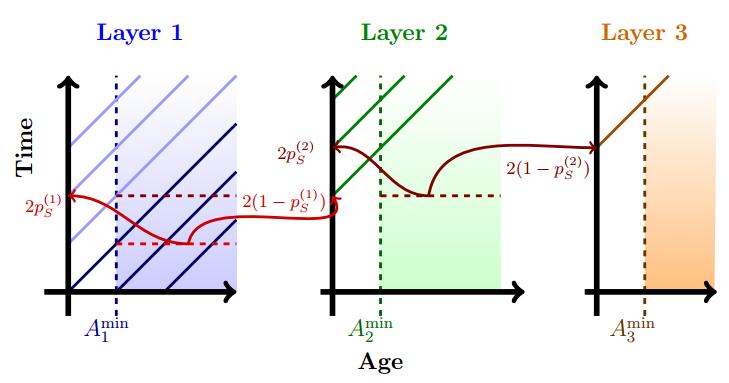

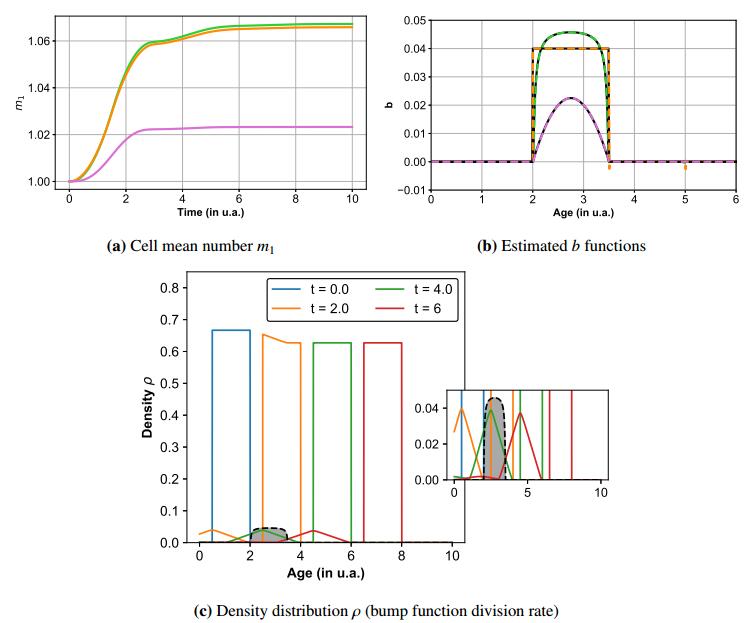
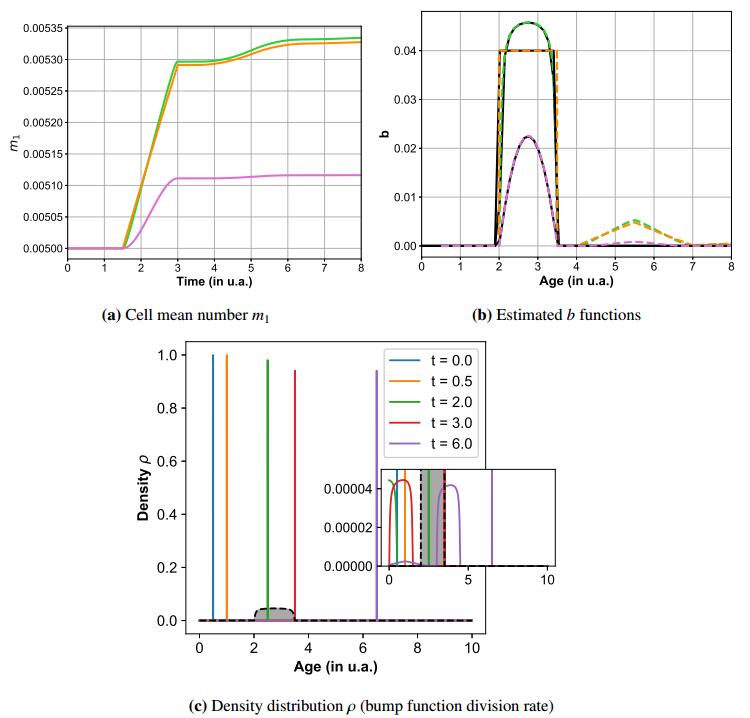
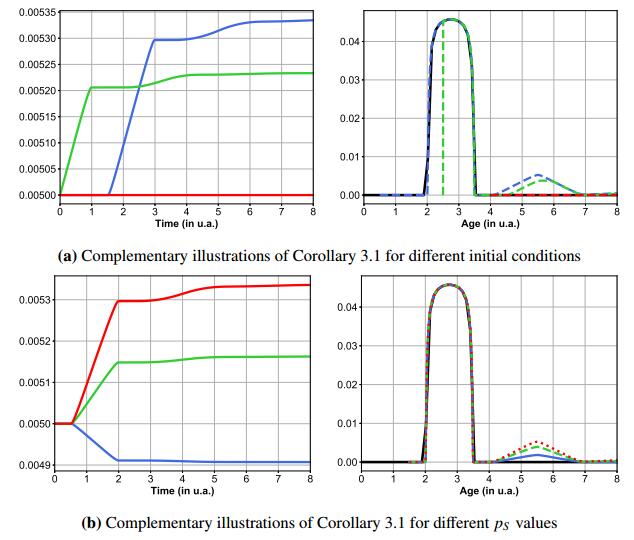

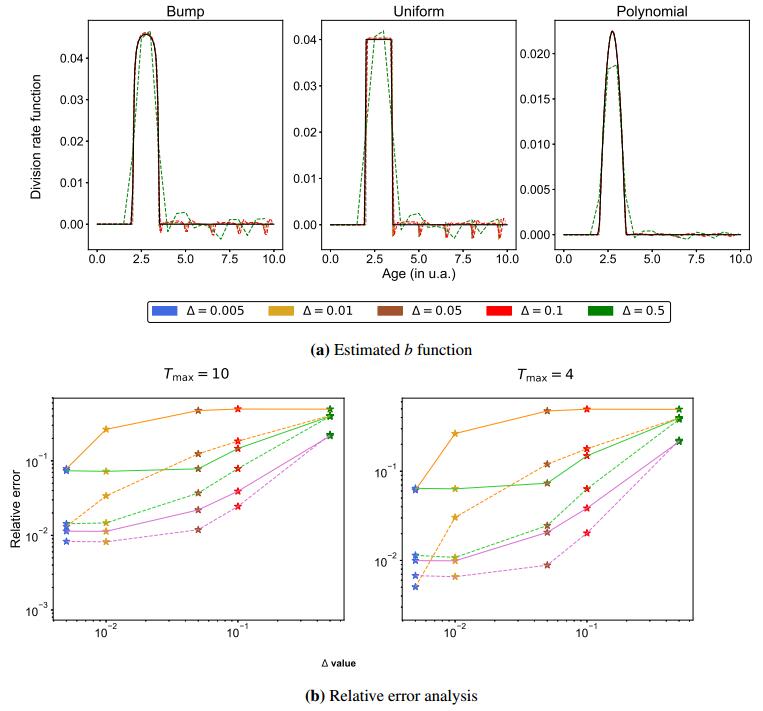


 DownLoad:
DownLoad: